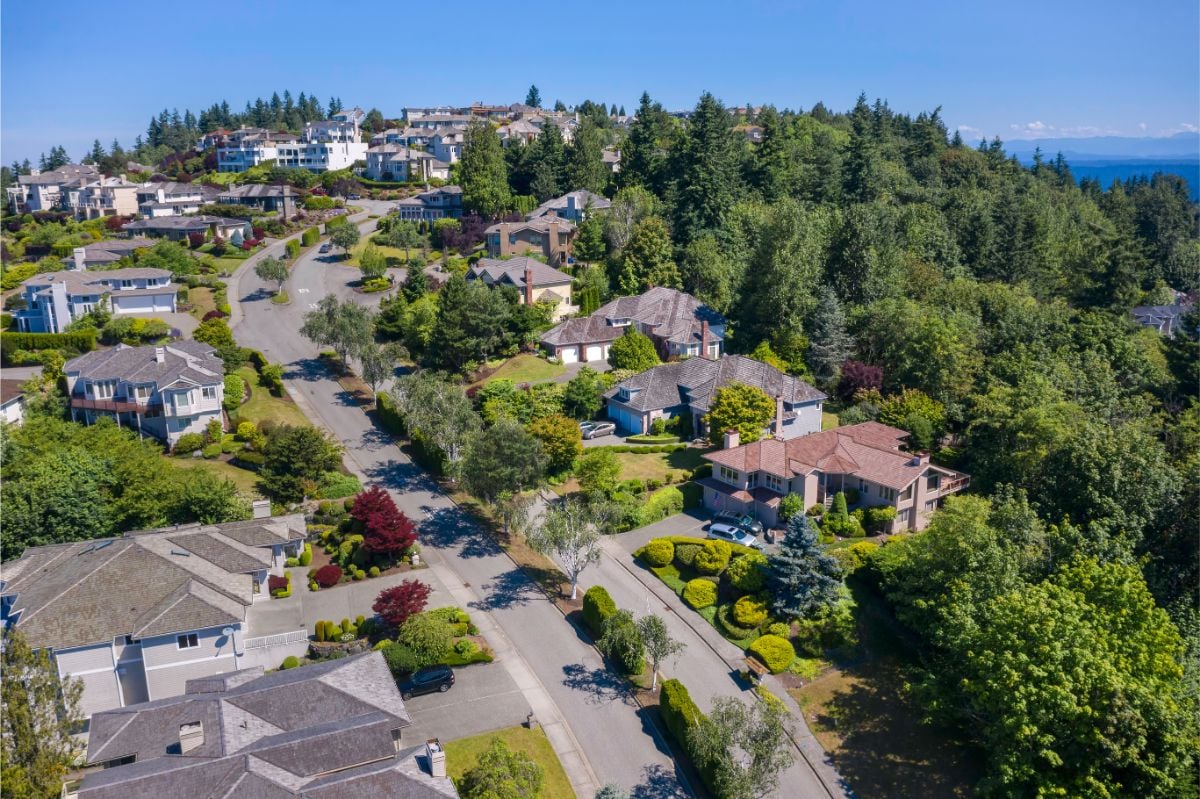
The far reaches of Northeast Washington rarely make it onto travel itineraries, yet the landscape here tells a story written in basalt cliffs, quiet rivers, and forgotten border crossings. It’s a corner of the state where small towns persist at their own rhythm, insulated from the pace of larger cities by distance and terrain.
Logging roads thread through fir forests, leading to settlements where the population barely fills a school gymnasium. These towns carry the imprint of miners, homesteaders, and railroad crews who once carved lives out of the rough ground and left behind post offices, storefronts, and clapboard houses that endure under heavy winters.
The Canadian border is never far away, shaping the culture as much as the geography. Cross-border trade, family ties, and even Prohibition-era smuggling still echo in place names and local stories. In towns like Curlew, Republic, and Molson, the line between Washington and British Columbia feels more like a suggestion than a hard boundary.
What makes this region compelling isn’t growth or glamour but the opposite: places where seclusion defines daily life. To live here is to accept long drives for groceries, nights with more stars than streetlights, and communities that measure wealth in quiet rather than speed.
25. Molson: A High-Plain Ghost Town with Sky for Days
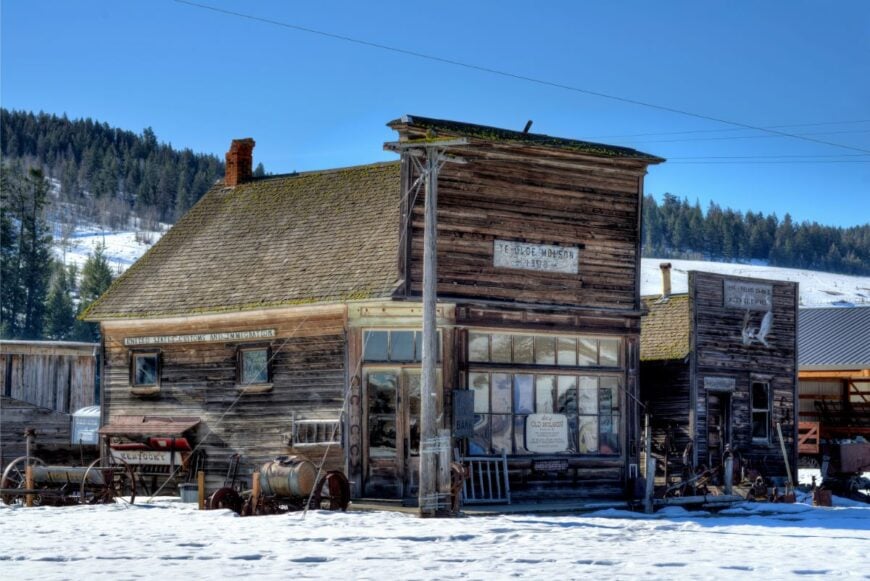
Molson feels like a secret folded into the high prairie—far enough from the rush that the wind has time to tell its stories. Its seclusion comes from altitude and distance: a tiny former mining town perched near the border, ringed by rolling wheat fields, larch, and long horizons.
The vibe is rustic and timeworn, with weathered storefronts and museum cabins that creak pleasantly in the afternoon breeze. Things to do include wandering the Molson Ghost Town Museum, birding the open fields and sloughs, photographing historic farm equipment, and taking slow drives across the plateau.
Agriculture and heritage tourism keep a light, seasonal rhythm here. When evening falls and the sky goes violet, you’re reminded that quiet can be as expansive as the land itself. It’s the kind of place that invites you to pause and hear the echo of earlier days.
Where is Molson?
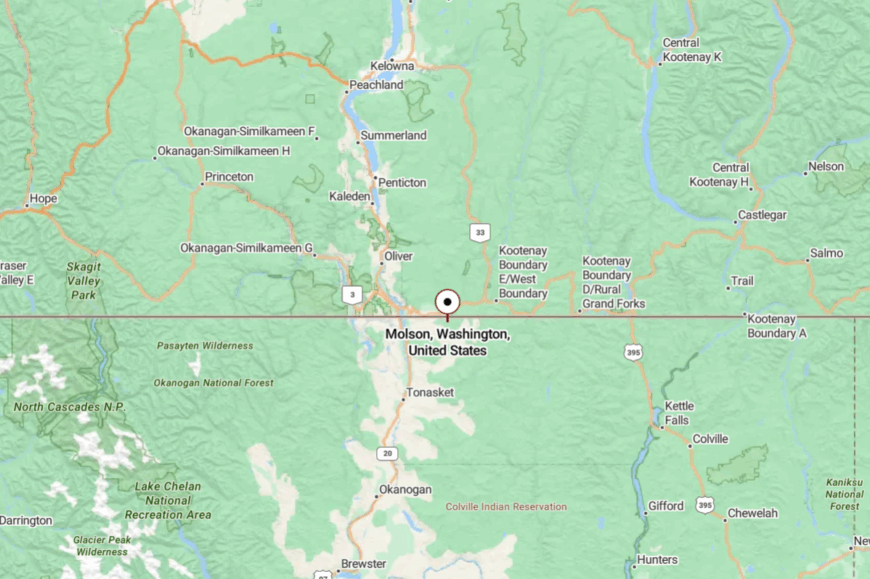
Tucked into the far northeastern edge of Okanogan County, Molson sits a few miles south of the Canadian line and about 15 miles northeast of Oroville. You reach it by meandering farm roads off Chesaw Road, climbing onto a wide, wind-brushed plateau.
Major highways keep their distance, which is part of Molson’s charm. It’s close enough to find on a map, but far enough that the sky feels like your only neighbor.
24. Nighthawk: Riverside Outpost on the Edge
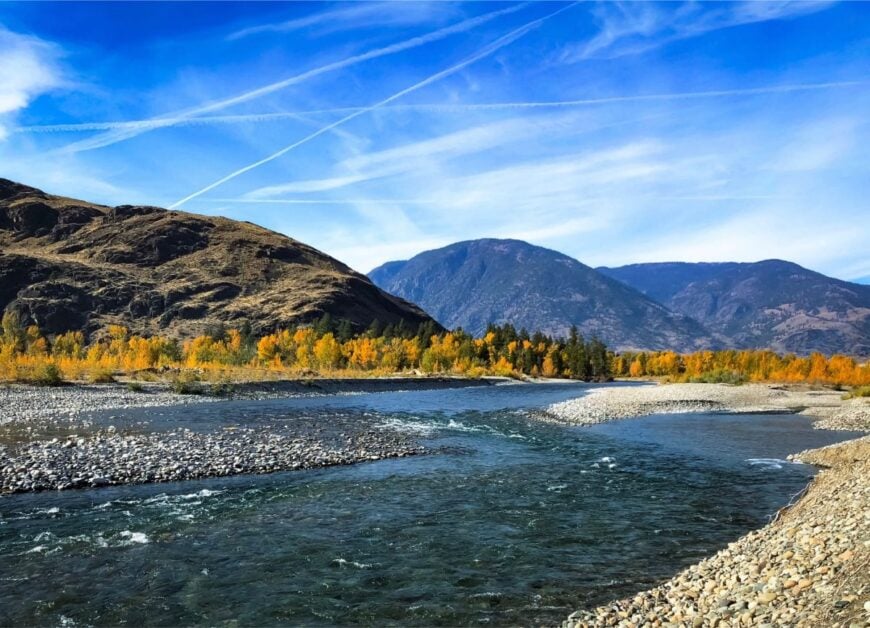
Nighthawk is little more than a name on the Similkameen River, and that’s exactly its magic. Its isolation comes from being a nearly empty border outpost where freight once rattled by and now only the river does.
The mood is spare and cinematic—cottonwoods, sage, and a few relics holding their ground against the seasons. Wander the old rail grade, cast a line in the Similkameen, scan the hills for mule deer, or snap photos of the minimalist townsite and nearby canyon walls.
Any remaining activity centers on ranching and cross-border mining history remembered more than practiced. The quiet here is textured by water and wind. Stay long enough and you’ll feel time loosen its grip.
Where is Nighthawk?

Set along the Similkameen River in northwestern Okanogan County, Nighthawk rests right at the U.S.–Canada boundary west of Oroville. From Oroville, follow Loomis–Oroville Road west into wide-open country.
There’s no fast route—just river bends and canyon light. It’s close to the line, but it feels like the end of the map.
23. Loomis: Sage Hills and Quiet Water

Loomis sits where brown hills meet green orchards, a pocket of life cupped by the Sinlahekin Valley. Its seclusion comes from the long, two-lane approach and the sheltering ridgelines that keep the bustle out.
The town’s vibe is sun-worn and neighborly—pickup trucks, porch steps, and the slow choreography of ranch work. Spend a morning exploring Sinlahekin Wildlife Area, paddle or fish at Palmer Lake, hike to viewpoints where hawks ride thermals, or browse the tiny store that anchors the community.
Ranching and small-scale agriculture keep the days honest. Dusk lays a honeyed light over the lake and the cottonwoods. It’s the kind of silence that feels earned by the miles you drove to find it.
Where is Loomis?
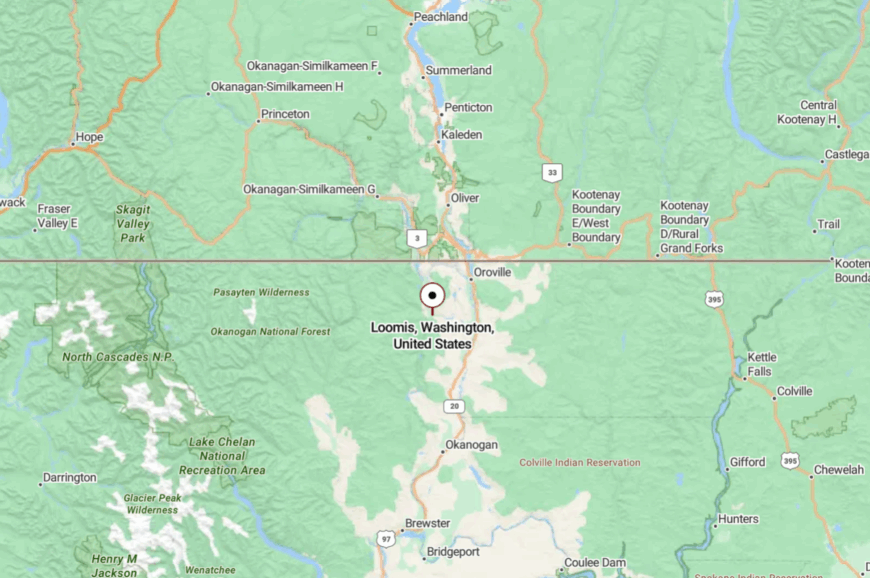
Hidden northwest of Tonasket in Okanogan County, Loomis sits near the north end of Palmer Lake. You’ll reach it via Loomis–Oroville Road or Loomis–Tonasket Road, both winding through ranchland and wildlife habitat.
The absence of major highways keeps traffic scarce. By the time you arrive, the only rush is the river and your own breath.
22. Conconully: A Valley of Two Lakes

Conconully is cradled between two small reservoirs, a vintage mountain town stitched together by water and pine. Its tucked-away feeling comes from the last miles: narrow, curving roads that lead you off the main grid and into a bowl of hills.
The vibe is part fishing-camp nostalgia, part Old West main street. Cast for trout on Upper or Lower Conconully Lake, wander the state park, ride ATVs into the backcountry, or warm up with coffee at the café where everyone nods hello. Tourism and cabin life are the gentle economic anchors.
In winter, snow hushes the whole valley; in summer, loons and boat wakes write the day’s only news. It’s the kind of place that reminds you how a small town can feel like its own world.
Where is Conconully?
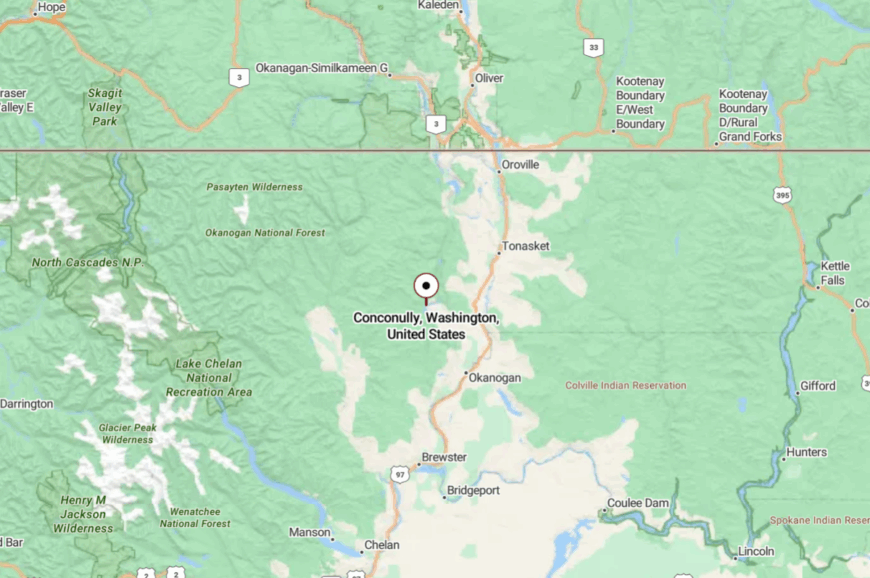
Nestled northwest of Okanogan city in the central-north of the county, Conconully sits at the end of a web of county roads. Access comes from Okanogan or Omak via Conconully Road, with the final stretch rising into a piney bowl.
Highways skirt the region, never intruding. You arrive by intention, and that’s why it feels so serene.
21. Wauconda: Pass-Town with Big Skies
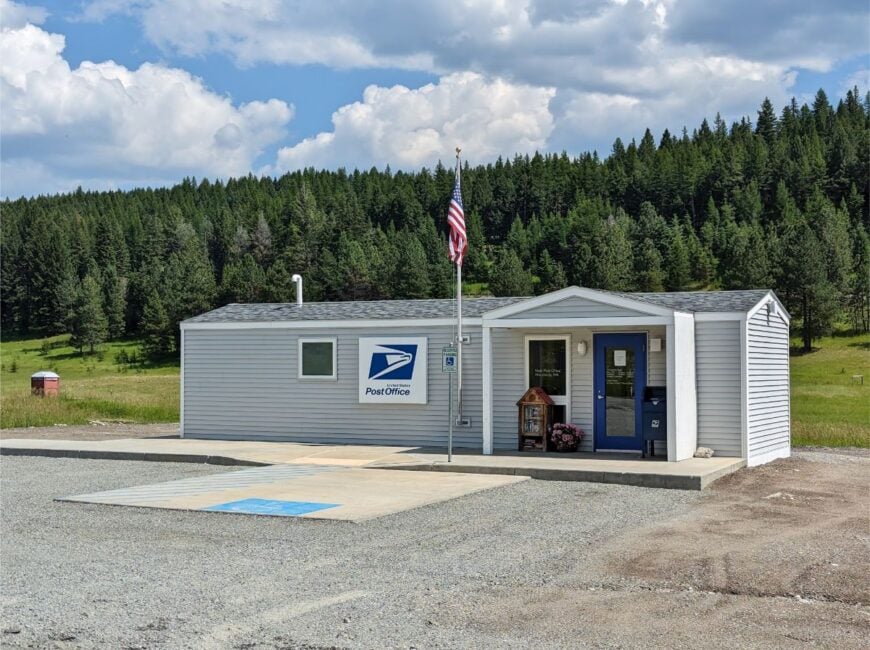
Wauconda is more crossroads than town, and that’s the secret—there’s space here to breathe between the pines. Its isolation stems from its spot on a mountain pass along a lightly traveled section of Highway 20, miles from larger hubs.
The mood is alpine-rural: crisp mornings, the scent of dust and fir, and a sky that seems to vault higher than elsewhere. Stop for a trail ramble near Wauconda Pass, explore quiet forest roads, watch for elk at dawn, or sip something warm at a roadside stop when it’s open.
Ranching and timber have long shaped the pace. Nights are dark enough that the Milky Way feels reachable. It’s a reminder that less can be exactly enough.
Where is Wauconda?
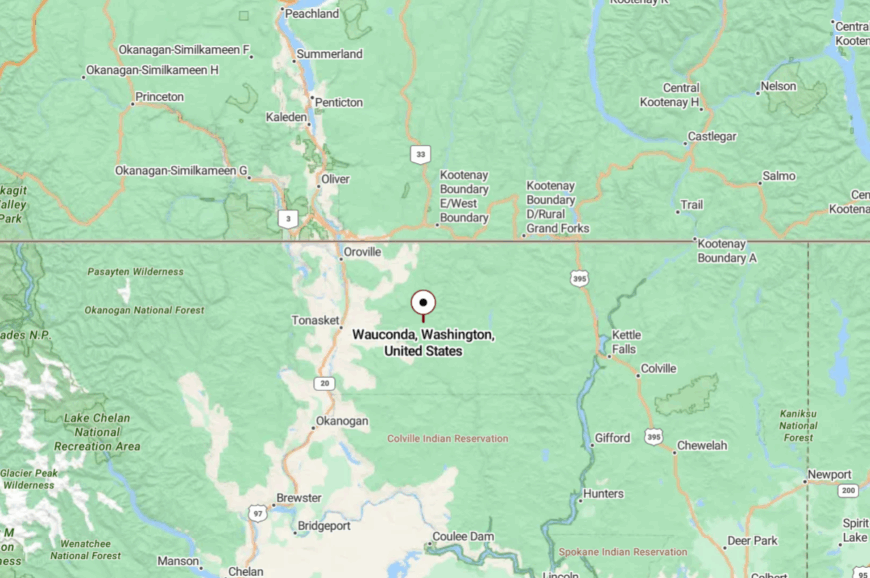
Wauconda sits on Highway 20 between Tonasket and Republic in the high folds of the Okanogan Highlands. The drive climbs steadily, trading orchards for lodgepole and larch.
Services are sparse, which preserves the pass-town hush. You crest the hill and feel like you’ve left the busy map behind.
20. Torboy: Pine-Shadowed Stop Along the 21
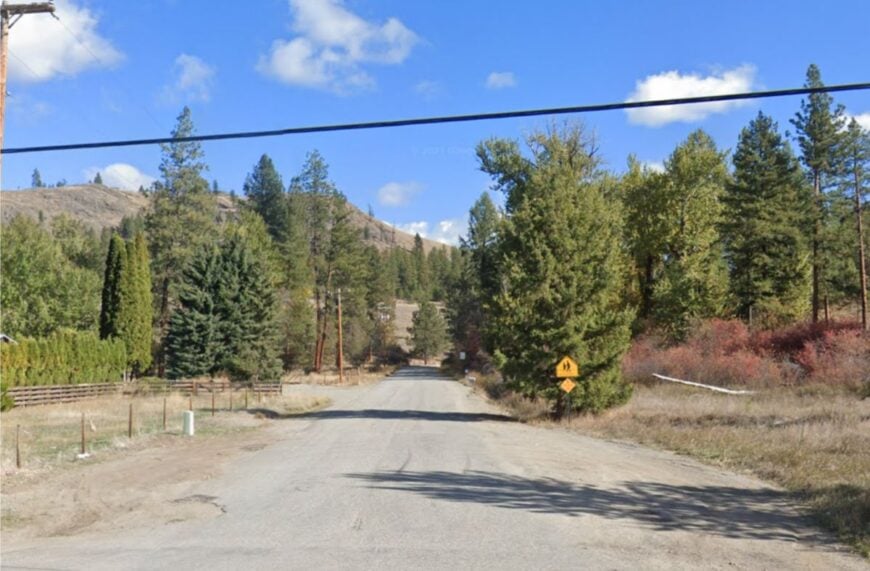
Torboy isn’t a destination so much as a clearing in the trees where life moves at a neighbor’s pace. Its seclusion comes from being a small CDP on Highway 21 north of Republic, surrounded by forested slopes and quiet drainages.
The vibe is woodsmoke and gravel driveways—practical, peaceful, and close to the land. Head out for trout on nearby creeks, bike the light-traffic highway shoulders, hunt mushrooms in spring, or snowshoe the logging spurs when winter settles in.
Work here often ties to the woods, commuting, or small home enterprises. The soundtrack is wind in the needles and an occasional passing truck. It’s the soft kind of quiet that lingers after you go.
Where is Torboy?
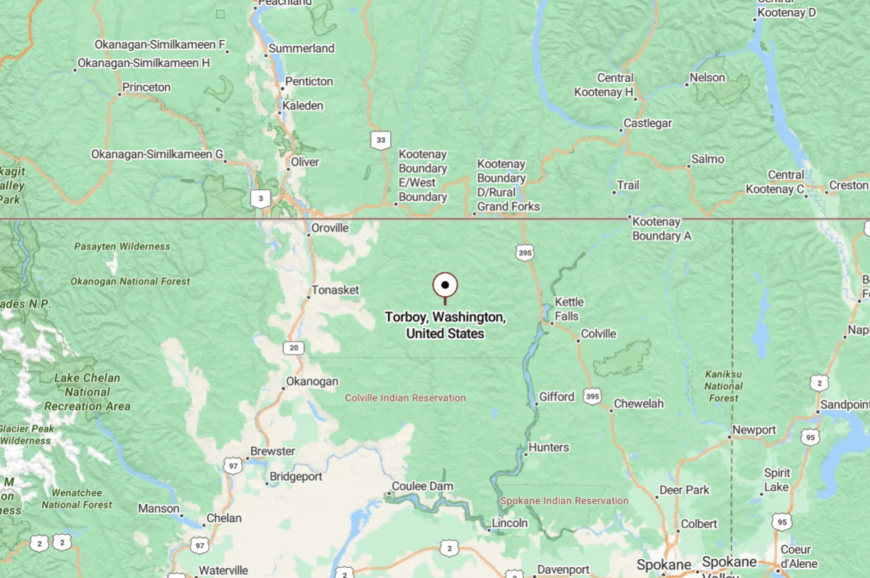
Located in Ferry County, just a few miles north of Republic, Torboy lies along Highway 21 on the east side of the Kettle River Range. You simply keep to the two-lane road until the forest opens and mailboxes appear.
With bigger towns a drive away, the woods do most of the talking. It’s close enough for groceries, far enough for stars.
19. Aeneas Valley: Homesteads Between Ridges
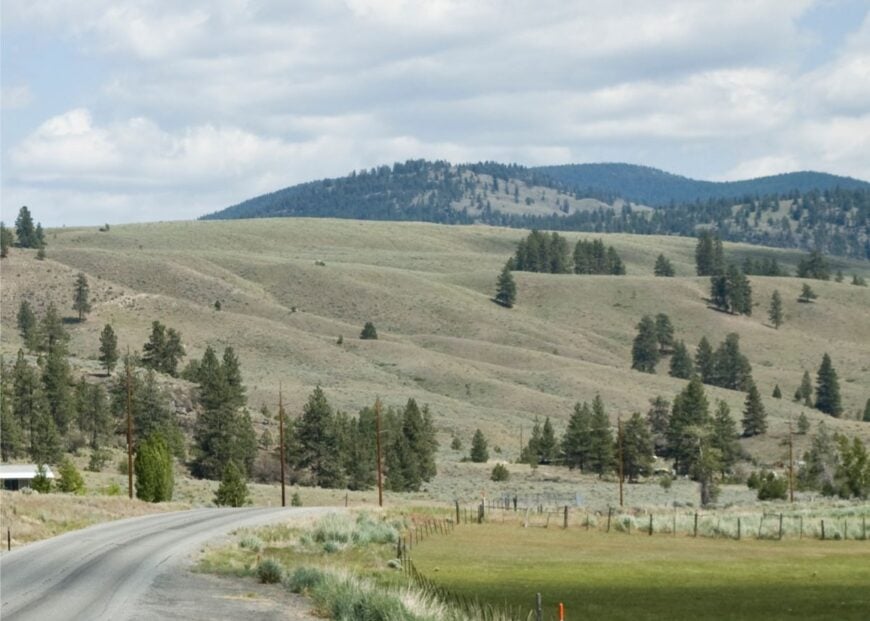
Aeneas Valley spreads out like a quilt—pastures, pines, and off-grid parcels stitched between long ridgelines. Seclusion here is a choice and a feature: miles of dirt and gravel, scattered homes, and a horizon that arrives slowly.
The vibe is self-sufficient and quietly friendly; a wave from a passing pickup is a proper greeting. Ride horses on old two-tracks, hike to dry ridges for hawk-view panoramas, fish small ponds, or explore backroads to hidden meadows.
Many residents rely on a mix of ranching, seasonal work, and remote trades. Sunset pours copper light over the valley floor. It’s the sort of place where solitude is not a lack, but a luxury.
Where is Aeneas Valley?
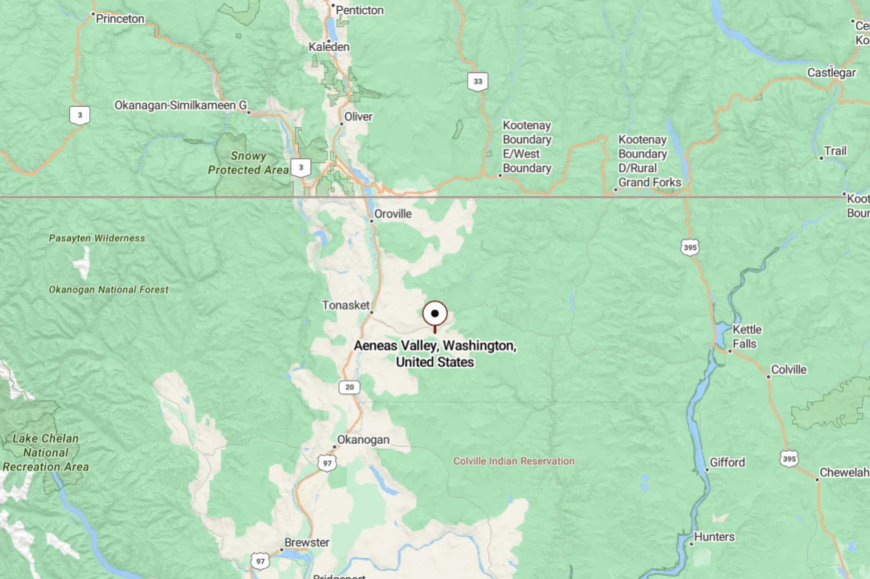
East of Tonasket in Okanogan County, Aeneas Valley sits between Highway 97 and Highway 21, reached by county roads that turn to gravel. The approach is slow, which is right for the valley’s pace.
With services clustered in nearby towns, the land itself feels like the amenity. You arrive and the ridges seem to fold you in.
18. Barstow: River Bend and Rail Memories
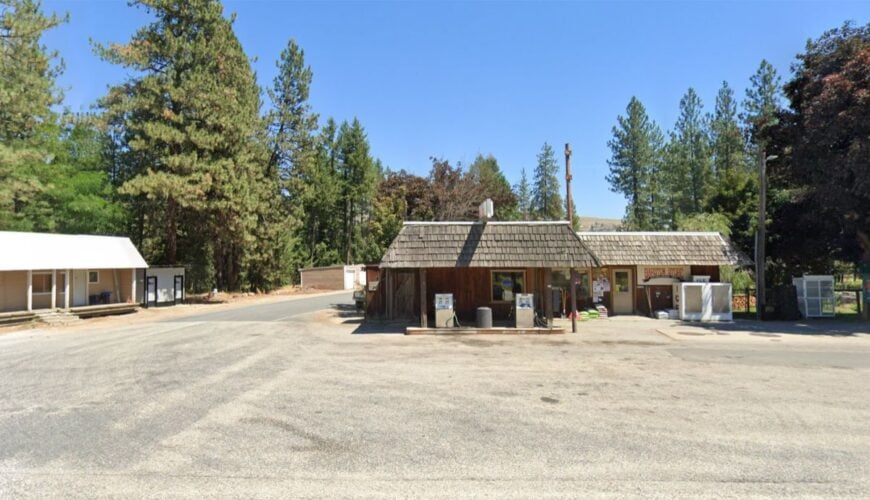
Barstow curls along the Kettle River like a quiet aside between chapters. Its tucked-away feel comes from being a small settlement off U.S. 395, hemmed by water, timber, and steep, folded hills.
The mood is wood-stacked porches and the soft clatter of a distant train that mostly runs in memory. Walk the riverbanks, cast for trout, drive forest spurs into the Kettle River Range, or picnic where the cottonwoods throw shade.
Logging, ranching, and commuting to larger towns shape everyday life. When evening slips down the valley, the river keeps whispering. It’s the kind of hush that makes your shoulders drop without asking.
Where is Barstow?
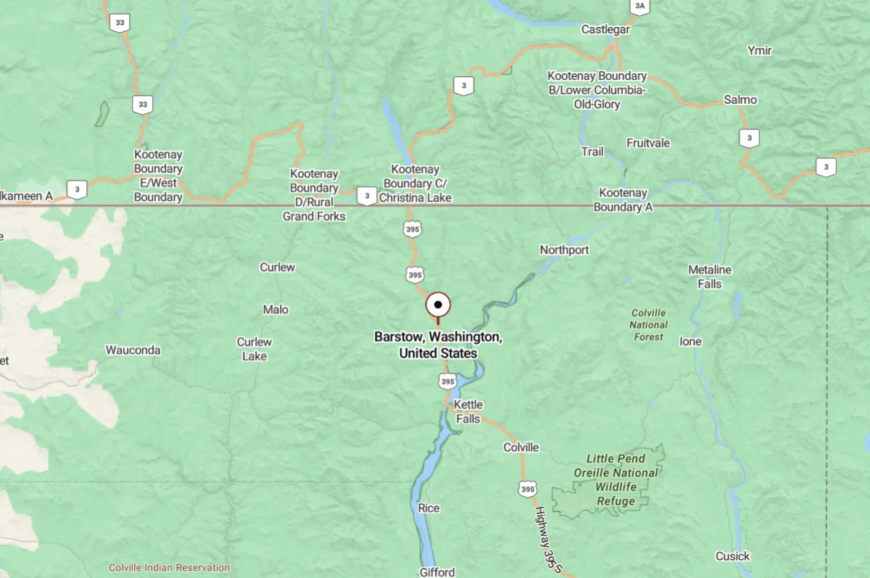
Barstow sits in Ferry County along U.S. 395 between Kettle Falls and the Canadian border. The highway narrows to curves and river views as you approach.
There’s little in the way of services, which is exactly the appeal. Here, the map is a ribbon of road and a line of water.
17. Boyds: Lake Roosevelt’s Quiet Shoulder
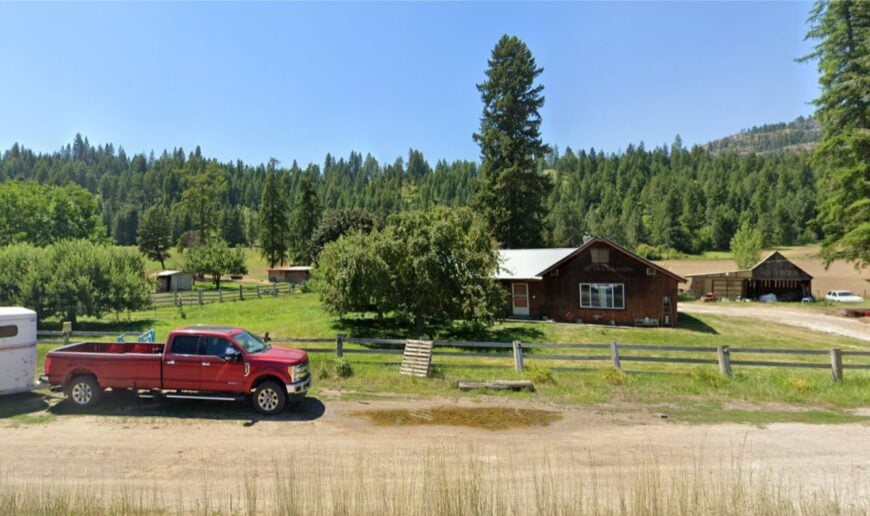
Boyds is a waterside whisper on Lake Roosevelt, where boat wakes sketch silver lines at dawn. It stays secluded thanks to its small size, limited development, and the long, curving thread of Highway 25 that skirts the shore.
The vibe is summer cabins, modest docks, and a sense that weekends were invented here. Launch a kayak, fish coves for trout and walleye, stroll the shoreline, or wander up to viewpoints where eagles loaf on snags.
A light mix of recreation and commuting keeps the lights on. Nights bring dark, mirror-still water and cricket song. It’s a place that asks you to exhale and mean it.
Where is Boyds?
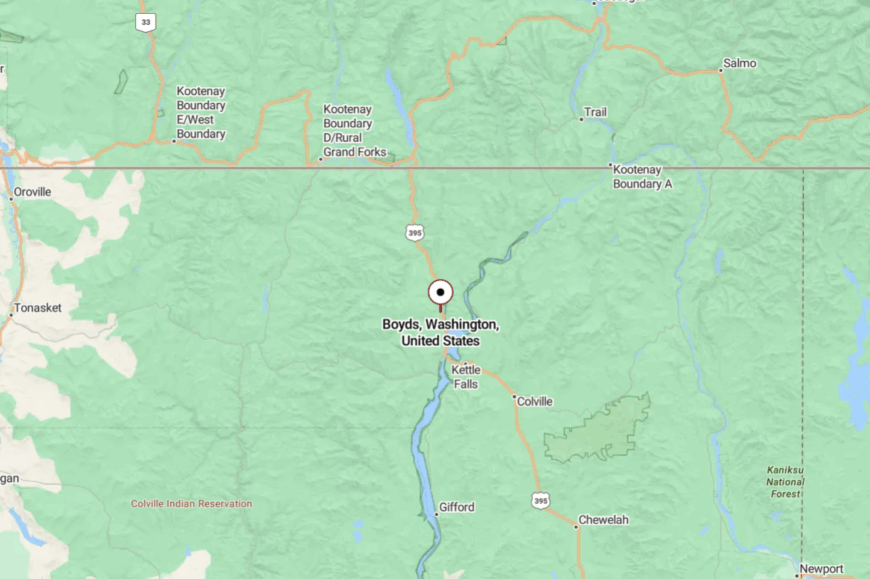
Located in Ferry County on the west side of Lake Roosevelt, Boyds lies north of Kettle Falls along Highway 25. Reaching it means following the lake road as it weaves between cliffs and coves.
Towns are few and far between out here. You’re never lost—just happily out of the way.
16. Evans: A String of Porches Above the Water
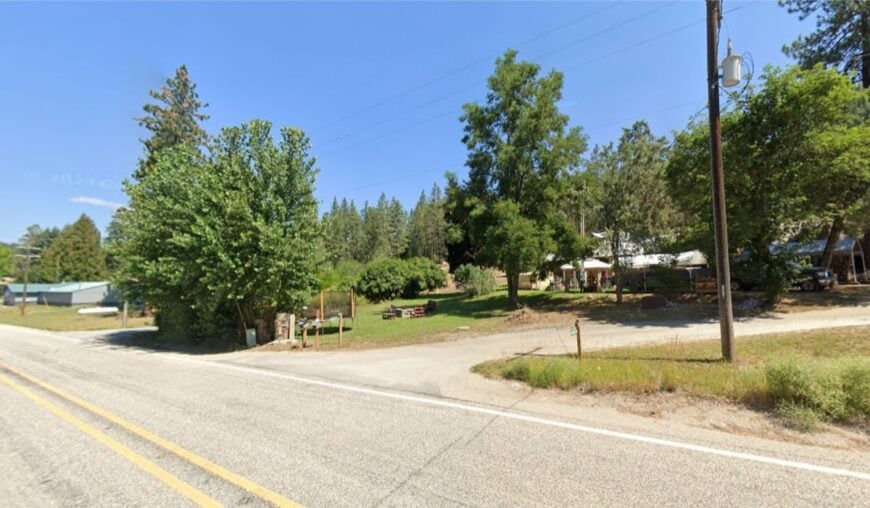
Evans feels like a front-porch community nested above the Columbia, where the view is the main event. Its sense of seclusion comes from the lake road’s distance from interstates and the way the terrain rises sharply from the water.
The vibe is easygoing and residential-rural, with tidy yards, boat trailers, and dogs who know every truck. Drop a line at the Evans boat launch, explore shoreline pullouts, take a slow drive toward Kettle Falls for history, or watch for osprey riding the thermals.
Work often means commuting to nearby towns or embracing lake-season side gigs. When sunset washes the bluffs pink, you’ll swear the day got longer. It’s the kind of quiet where neighbors wave from across the water.
Where is Evans?
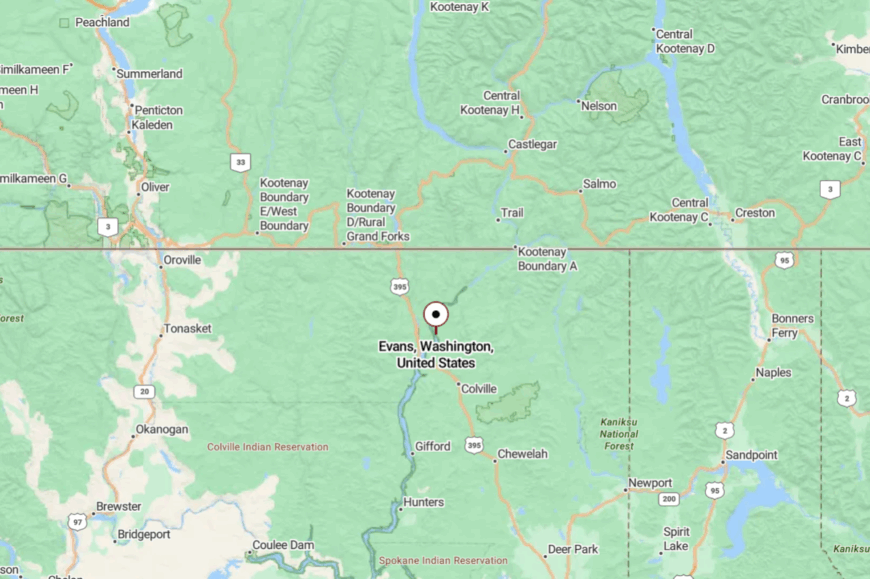
Evans sits in Stevens County along Highway 25 between Kettle Falls and Northport, perched over Lake Roosevelt. Access is simple but slow, tracing the curves of the reservoir.
With bigger services consolidated to Kettle Falls and Colville, the shoreline remains restful. It’s close to what you need, yet distant enough to feel apart.
15. Marcus: Small Town, Big Water
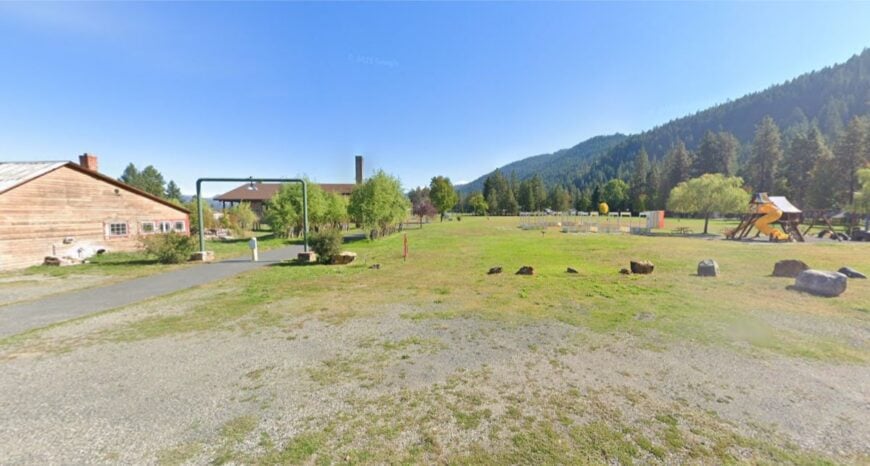
Marcus is a compact town with a waterfront heart, where the Columbia’s broad back sets the rhythm. It feels secluded because the lake hemmed it in and the highways only pass by, not through.
The vibe is tidy streets, shady parks, and a sense of history shaped by the reservoir’s rise. Launch at Marcus Island, picnic beneath old cottonwoods, watch for bald eagles, or browse local history exhibits when they’re open.
Everyday life threads through recreation, commuting, and seasonal tourism. At night, lights from a few boats dot the dark water like slow-moving stars. It’s the kind of quiet that makes conversation easy.
Where is Marcus?
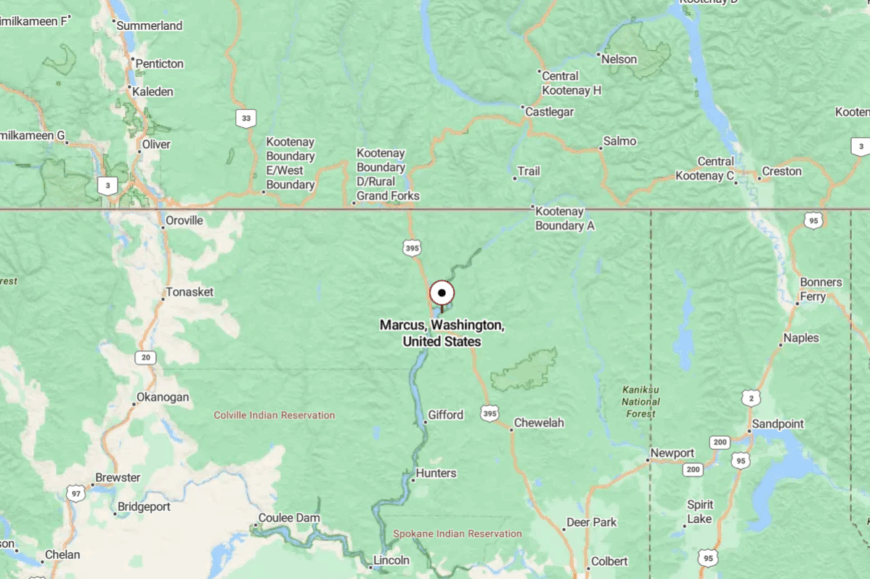
Marcus lies in Stevens County just north of Kettle Falls along Highway 25 on Lake Roosevelt. Reaching it is a matter of following the shoreline road as it rises and dips beside the bluffs.
There’s no rush here; the water sets the pace. You arrive and the reservoir feels like a front yard.
14. Northport: Last Stop Before the Line
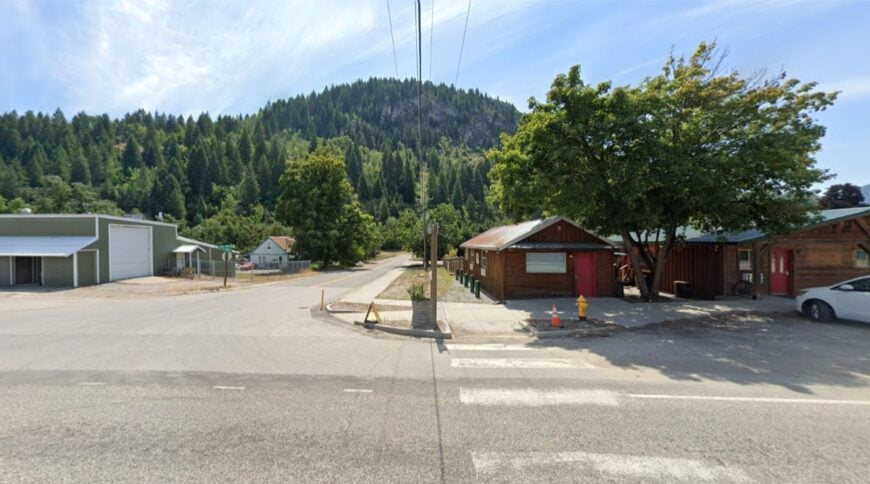
Northport wears its frontier past lightly, a small grid of streets cupped by forest and river. Its seclusion comes from being the final town on the Columbia before Canada, where traffic thins and the timbered hills thicken.
The vibe is historic storefronts, friendly taverns, and trailheads that start practically at the edge of town. Walk the riverfront, ride gravel toward Deep Lake, explore logging spurs for vistas, or time your visit with a small-town festival.
Logging, recreation, and cross-border trade give it a steady pulse. The evening whistle is the wind in the branches. It’s the kind of place where the map fades into trees and you don’t mind.
Where is Northport?
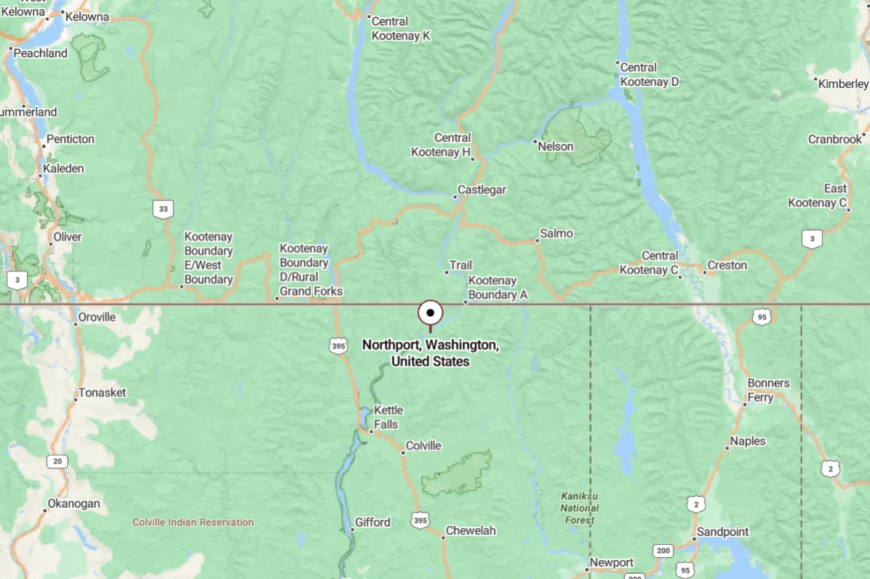
Set in far northern Stevens County, Northport sits along the Columbia River (Lake Roosevelt) just south of the border. U.S. 395 leads you north, then you drift to the river road for the final quiet miles.
Distances stretch out here—services cluster in Colville, miles down the valley. It’s reachable, yet feels like a threshold to somewhere wilder.
13. Republic: Gold Rush Echoes in the Highlands
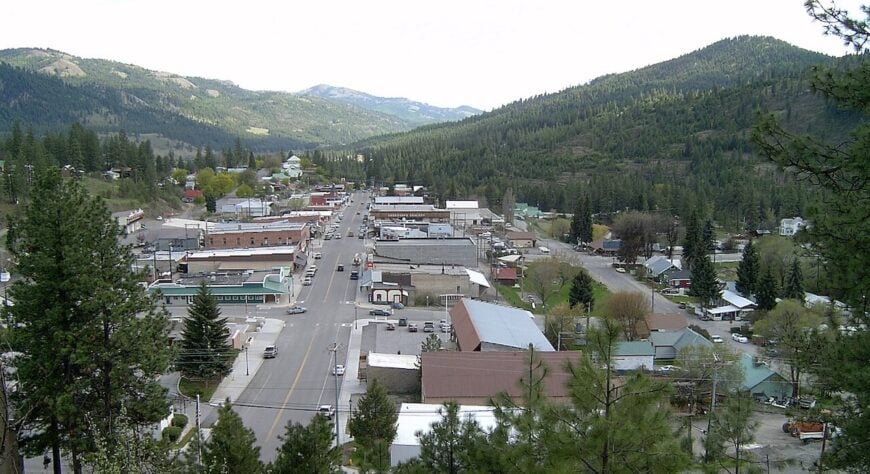
Republic is a mountain town that still carries the sound of pickaxes in its name. Born in the 1890s gold boom, it grew from a rough mining camp into a county seat with a main street of brick storefronts, faded signs, and a museum that feels like a time capsule. Its seclusion stems from the ridges that hem it in and the long drives required to get there.
The mood today is a blend of heritage and backcountry access. You can tour the Stonerose Fossil Site to split shale and find ancient leaves, browse antique shops, or follow forest trails into the Kettle River Range. Summers bring a rodeo and music in the park; winters leave the streets quiet under snow.
Though mining faded, small businesses, tourism, and nearby ranchlands keep a steady pulse. Nights here are cold and star-sharp, the kind that make you realize how far you are from the Interstate. Republic feels both lived-in and lightly guarded by its history.
Where is Republic?

Republic sits in Ferry County, deep in the Kettle River Valley where Highway 20 meets Highway 21. The town is roughly halfway between Tonasket to the west and Kettle Falls to the east, making it the main hub in an otherwise sparsely settled highland.
The approach to Republic is always scenic—climbing through forest passes or rolling ranch country before dropping into town. With Spokane over two hours away and Canada just to the north, it remains a crossroads of its own kind, remote but rooted.
12. Metaline: River-Town with Working Roots
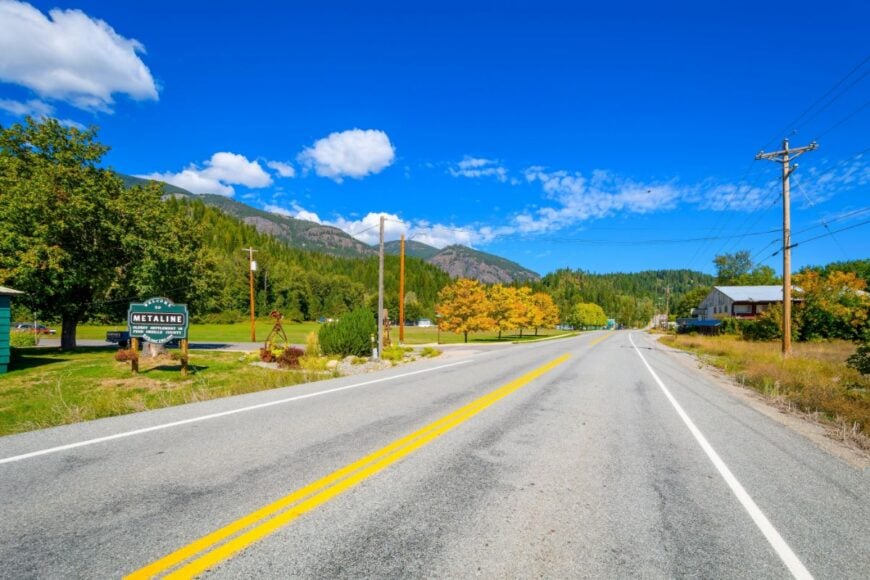
Just downstream from its famous neighbor, Metaline carries a quieter, work-boot charm. Its seclusion is about distance and canyon geometry—the river runs deep, the hills rise fast, and the highway ends not far beyond.
The vibe is unpretentious and river-forward: docks, boats, and a few streets where everyone knows which way the wind’s blowing. Fish the Pend Oreille, walk the shoreline parks, take a scenic drive toward Boundary Reservoir overlooks, or watch for bighorn sheep on the cliffs.
Hydropower and tourism temper the seasons. Even in summer, the canyon air keeps a cool edge. It’s the kind of small town that feels steady under your feet.
Where is Metaline?
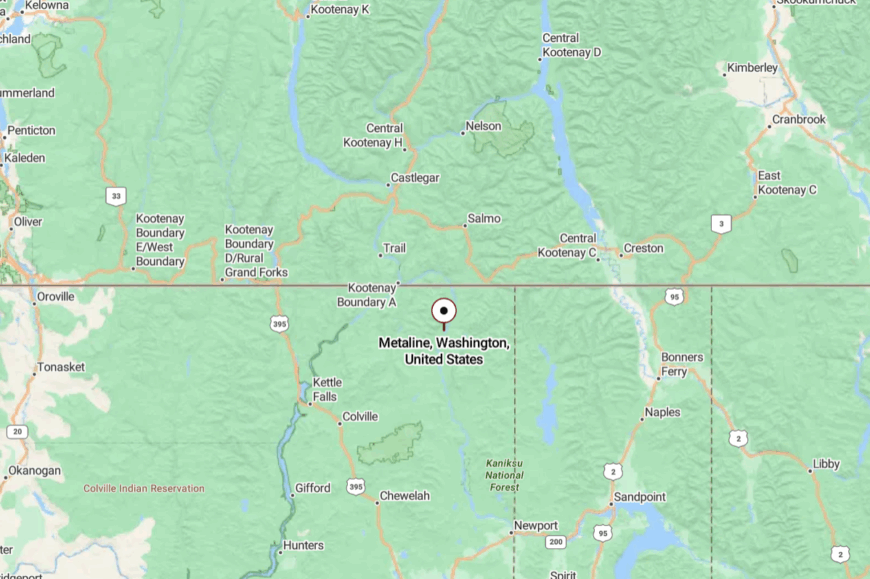
Metaline sits in northern Pend Oreille County along Highway 31, a few miles south of Metaline Falls and near the Canadian border. The approach is a long pull up the river from Newport.
With no major crossroads and rock walls pressing in, the town stays naturally tucked away. You arrive beside water that looks like a road of its own.
11. Ione: Pines, Bridges, and Slow Water
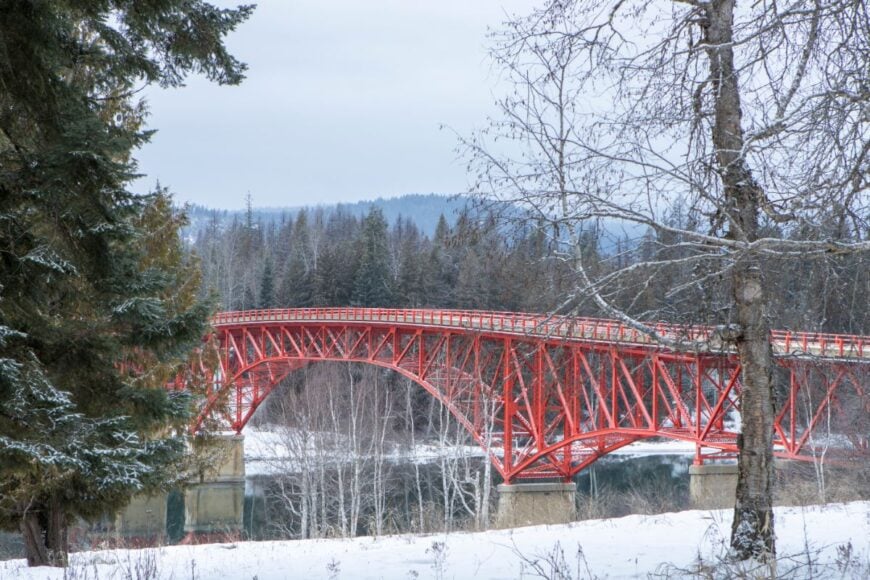
Ione gathers where the Pend Oreille widens, a bridge and a few blocks framed by tall pines. It feels secluded because the valley is long and narrow, with the Selkirks keeping a watchful wall on either side.
The vibe is classic valley town—rail heritage, river picnics, and Saturday coffees where conversations drift like the current. Ride the scenic excursion train when it runs, launch a canoe at the park, scout waterfalls up nearby creeks, or drive north for canyon overlooks that hush a crowd.
Logging, rail history, and recreation knit together the local story. When the fog lifts off the river in the morning, the town appears like a postcard. It’s close to everything you came for: quiet, trees, and a good deep breath.
Where is Ione?
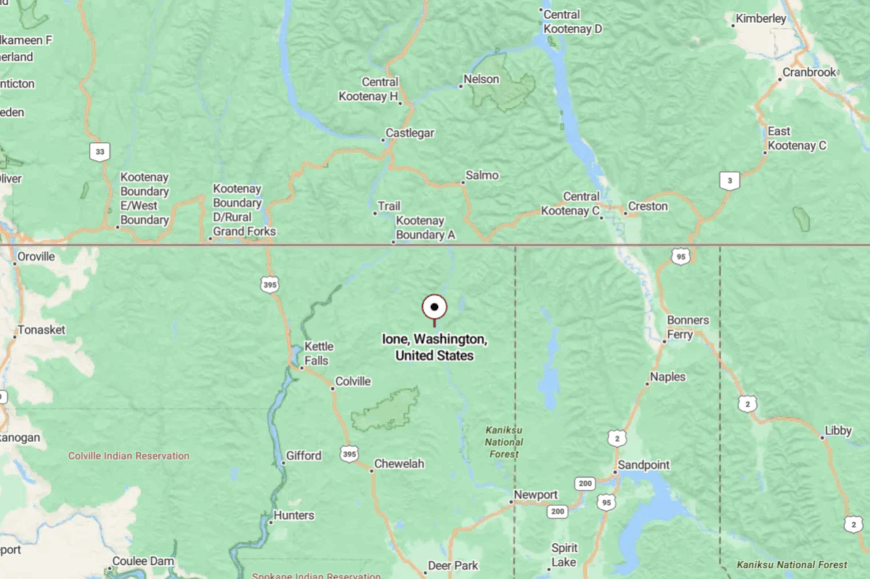
Midway up Pend Oreille County, Ione rests along Highway 31 on the Pend Oreille River, north of Cusick and Usk and south of Metaline. From Newport, it’s a steady, scenic drive through the valley.
The route rarely hurries and neither will you. It’s close enough to reach, but far enough that the forest has the final word.
10. Danville: Quiet Border Town Escape

Danville is a tiny community with an approximate population of just around 34 people. Nestled right against the Canadian border, I’ve found it to be the epitome of a peaceful escape.
The area is ideal for outdoor activities like hiking, fishing, and exploring the surrounding Colville National Forest. The local economy is minimal, with a small general store and border crossing facilities being the main establishments.
What makes Danville truly secluded is its remote location far from major highways and urban centers, offering a tranquil lifestyle where you can genuinely disconnect. It’s the perfect spot if you’re looking to immerse yourself in nature and enjoy the serenity of a small, close-knit community.
Where is Danville?

Located in Ferry County, Danville sits right along the U.S.-Canada border in Northeast Washington. Its seclusion comes from being tucked away in a remote part of the state, with miles of forest and mountain ranges surrounding it.
To get there, you’d likely travel along Highway 21, the main road that passes through this quiet region. The nearest significant town is Republic, about 35 miles south, making Danville a true escape from the hustle and bustle.
9. Curlew: Seclusion by the Kettle River

Curlew is a small town with an approximate population of about 120 residents. Set along the banks of the Kettle River, I’ve enjoyed the serene riverside environment it offers.
Outdoor enthusiasts can indulge in fishing, kayaking, and exploring the nearby Curlew Lake State Park. The town’s main activities revolve around outdoor recreation and a few local businesses that cater to travelers and residents alike.
Curlew’s seclusion is enhanced by its distance from major cities and the surrounding dense forests, providing ample privacy and a strong connection to nature. It’s a haven for those looking to escape to a quieter, simpler lifestyle by the river.
Where is Curlew?

Nestled in the northeastern part of Washington State, Curlew is close to the Canadian border in Ferry County. Its secluded nature is due to its location amidst the rugged landscapes of the Kettle River Range, with limited access routes.
To reach Curlew, you can take Highway 21 north from Republic, winding through scenic mountain roads. The isolation and natural beauty of the area make it a perfect spot for those seeking peace away from urban life.
8. Orient: Life Off the Beaten Path
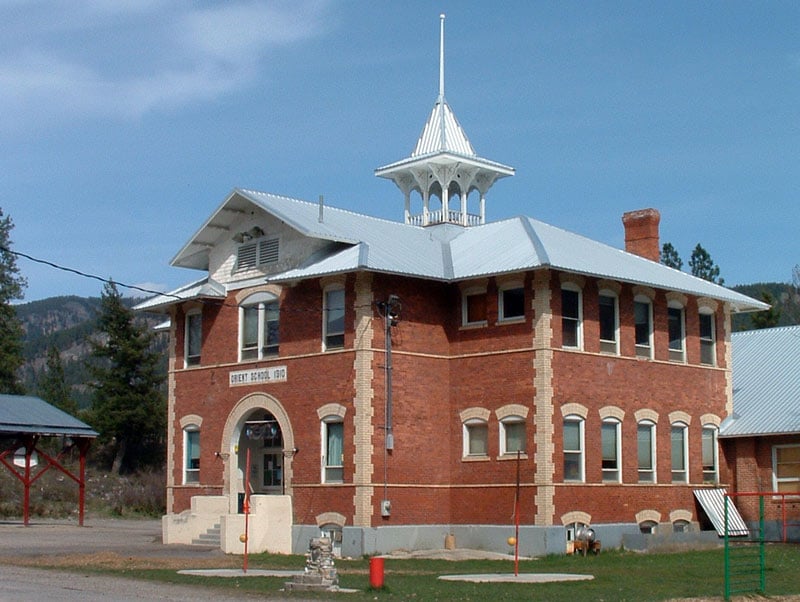
With a population of around 115 people, Orient is a peaceful rural community that I’ve found ideal for solitude seekers. The town offers opportunities for hiking, wildlife watching, and enjoying the tranquility of the surrounding forests.
There’s a small post office and a few local businesses, but the main “industry” is really just living quietly amid nature.
What makes Orient truly secluded is its removal from city hustle, nestled among rolling hills and dense woodlands with minimal development. If you’re looking for a place where you can truly unplug and soak in the serenity of nature, Orient might just be your destination.
Where is Orient?

Orient is located in Ferry County, Northeast Washington, close to the border with Canada. Its seclusion stems from its remote setting along Highway 395, far from any major urban centers.
Getting there involves a scenic drive through forested landscapes and along the Kettle River. The town’s distance from bustling cities and its tranquil surroundings make it feel like a world apart.
7. Chesaw: Okanogan Highlands Hideaway

Chesaw is a tiny community with a population hovering around 50 residents, nestled in the Okanogan Highlands. I love its remote charm, with expansive landscapes and minimal development.
The area is perfect for hiking, horseback riding, and in winter, snowmobiling across the snowy highlands. The main activities include small-scale ranching and an annual rodeo that brings the community together.
Chesaw’s seclusion comes from its location miles away from larger towns and its setting amidst rolling hills and meadows, making it an ideal hideaway for anyone craving open spaces and quiet nights under the stars.
Where is Chesaw?

Situated in Okanogan County in Northeast Washington, Chesaw lies near the Canadian border, tucked away in the highlands. Its out-of-the-way location contributes to its sense of seclusion, with few roads leading in and out.
To get there, you’d travel east from Oroville along the Chesaw Road, enjoying a scenic drive through rural landscapes. The remoteness and sparse population make Chesaw a perfect retreat from the busier world.
6. Inchelium: Wilderness Retreat

Inchelium has a population of about 400 people and is a place where I’ve found a true connection with nature. Surrounded by lush forests and near Lake Roosevelt, it offers a secluded haven for outdoor enthusiasts.
Activities include fishing, boating, hiking, and immersing oneself in the rich cultural heritage of the Colville Confederated Tribes. The local economy is primarily based on tribal operations and services, including a community center and schools.
What makes Inchelium secluded is its remote location within the Colville Indian Reservation and the expansive wilderness that envelops it, offering a peaceful retreat for those looking to escape the noise of modern life.
Where is Inchelium?

Located in Ferry County in Northeast Washington, Inchelium sits on the eastern side of the Columbia River’s Lake Roosevelt. Its seclusion is enhanced by the surrounding forests and the lack of major highways nearby.
To reach Inchelium, you’d typically take a ferry across Lake Roosevelt from Gifford, adding to the sense of remoteness. The town’s unique location and accessibility make it a wilderness retreat that’s both serene and culturally rich.
5. Rice: Where Open Spaces Abound

Rice is a small community with an estimated population of around 200 people. I’ve always appreciated its vast open areas and low-density living, making it ideal for anyone seeking ultimate privacy.
The area is perfect for hiking, horseback riding, and enjoying panoramic views of the surrounding hills. The main enterprises are agriculture and small-scale ranching, keeping the landscape largely untouched.
Rice’s seclusion comes from its expansive properties and minimal development, allowing residents to enjoy wide-open spaces and a deep connection with nature.
Where is Rice?

Rice is located in Stevens County, Northeast Washington, along Highway 25 near the Columbia River. Its secluded nature is due to its rural setting and the rolling terrain that separates it from larger towns.
To get there, you’d drive along winding roads that offer stunning views of the river and countryside. The absence of urban distractions and the vast landscapes make Rice a peaceful haven for those looking to embrace a quieter way of life.
4. Gifford: Riverside Peacefulness

Gifford is a quaint community with around 70 residents, situated along the Columbia River’s eastern bank. I’ve enjoyed the tranquil riverside lifestyle it offers, with spacious lots that provide plenty of privacy. Residents can engage in fishing, boating, and picnicking by the river.
There are a few local businesses, including a general store and a ferry landing, but the area remains largely undeveloped, contributing to its peaceful atmosphere.
Gifford’s seclusion comes from its riverside location and the surrounding natural landscapes, offering a serene environment where the sound of flowing water is a constant companion.
Where is Gifford?

Located in Stevens County, Gifford sits along Highway 25, north of the town of Inchelium. Its seclusion is partly due to the ferry that connects it across Lake Roosevelt to Inchelium, limiting direct access.
To get there, you can enjoy a scenic drive along the river or take the free ferry service. The town’s riverside setting and limited connectivity make it an ideal spot for those seeking peace away from busy roads and crowded places.
3. Laurier: Borderline Bliss

Laurier is a tiny community with a population of just about one or two people—yes, you read that right! Situated right on the Canadian border, I’ve found it to be a spot of untouched natural beauty.
While there’s not much in terms of amenities, the surrounding area offers opportunities for hiking, bird watching, and enjoying the solitude of the great outdoors.
The lack of major industries keeps the area pristine, and its seclusion is undeniable. Being so close to the border yet so far from urban centers, Laurier offers a unique, peaceful atmosphere that’s hard to find elsewhere.
Where is Laurier?

Laurier is located in Ferry County, at the northern terminus of U.S. Route 395 before crossing into Canada. Its secluded nature is due to its remote position along the border and the dense forests that envelop it.
To get there, you’d drive north on Highway 395 through miles of scenic landscapes. The minimal traffic and proximity to vast wilderness areas make Laurier a perfect spot for those seeking borderline bliss in a serene setting.
2. Malo: Mountain Serenity Awaits

Malo is a small unincorporated community with a population of around 30 residents. Tucked into the mountains of Ferry County, I’ve found that it provides a tranquil setting perfect for those yearning for expansive, quiet landscapes.
Outdoor activities abound, including hiking, snowshoeing, and exploring the nearby Kettle River Range. The mainstays of the local economy are small-scale agriculture and timber, maintaining the area’s rural feel.
What makes Malo secluded is its mountainous terrain and the sparse population, offering a serene environment where one can truly relax and enjoy nature’s bounty.
Where is Malo?

Located along Highway 21 in Ferry County, Malo sits north of Republic and south of Curlew. Its seclusion is due to its mountainous surroundings and the limited number of residents.
To reach Malo, you’d travel through winding mountain roads that offer breathtaking views. The town’s remote location amidst the hills makes it an ideal hideaway for anyone looking to escape to the serenity of the mountains.
1. Tiger: A Hidden Gem in the Forests

Tiger is an unincorporated community with no official population count, as it’s considered a ghost town. Hidden deep within the forests of Pend Oreille County, I’ve discovered that Tiger offers peaceful surroundings far from urban noise.
The area is enveloped by dense forests and is perfect for hiking, wildlife spotting, and simply enjoying the tranquility of nature. There’s a historic general store and museum, but no significant industries remain, which contributes to its secluded ambiance.
What makes Tiger truly special is its deep-forest seclusion, offering a quiet retreat where the modern world’s hustle feels worlds away.
Where is Tiger?

Tiger is located at the junction of Highway 20 and Highway 31 in Northeast Washington. Its secluded nature comes from its location amidst expansive forests and the lack of nearby towns.
To get there, you’d take a scenic drive through wooded areas, often feeling like you’re journeying back in time. The remoteness and the enveloping natural surroundings make Tiger a hidden gem for those wanting to get away from it all.


